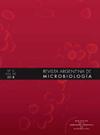[对含糖开菲尔酒样品的分析,为阿根廷食品法典制定监管框架]。
IF 2.1
4区 生物学
Q4 MICROBIOLOGY
引用次数: 0
摘要
水开菲尔是一种发酵饮料,它的生产、商业化和消费越来越受欢迎。然而,《阿根廷食品法典》(CAA,西班牙语首字母缩写)并没有考虑到这一点。这项工作的目的是确定阿根廷企业家生产的水开菲尔样品的一些微生物和物理化学特性,为国家食品委员会(CONAL,西班牙语首字母缩略词)提供必要的信息,以便编写一篇将水开菲尔纳入CAA的文章。为此,邀请了来自该国不同城市的31家水开菲尔生产商将其产品样品送到国家食品研究所(INAL,西班牙语首字母缩写)的国家参考实验室(阿根廷布宜诺斯艾利斯)进行微生物和物理化学分析。在2021年12月至2022年2月期间,共收到13个样品,以及相应的生产过程信息。分析的样品显示pH值在2.9和3.7之间,可滴定酸度在6和16.6之间(ml NaOH 1N/100ml样品),酒精含量在0.58和2.55之间(%v/v),乳酸菌计数为1×107CFU/ml,酵母计数为1×106CFU/ml,肠杆菌计数低于10CFU/ml)。结果提供了当地数据,最终于2024年8月12日公布了卫生质量秘书处和生物经济秘书处的第7/2024号联合决议,其中第1084条tris被纳入CAA关于发酵饮料的第13章,涉及水开菲尔。本文章由计算机程序翻译,如有差异,请以英文原文为准。
Análisis de muestras de kéfir de agua para el desarrollo de un marco regulatorio en el Código Alimentario Argentino
Water kefir is a fermented beverage that has experienced a growing popular interest in its production, commercialization and consumption. However, it was not contemplated as such in the Argentine Food Code (CAA, Spanish acronym). The aim of this work was to determine some microbiological and physicochemical characteristics of water kefir samples produced by Argentine entrepreneurs, to have the necessary information for the National Food Commission (CONAL, Spanish acronym) to generate an article incorporating water kefir in the CAA. For this purpose, 31 water kefir producers from different cities of the country were invited to send samples of their products for microbiological and physicochemical analysis to the National Reference Laboratory of the National Food Institute (INAL, Spanish acronym) (Buenos Aires, Argentina). In the period December 2021-February 2022, a total of 13 samples were received, together with the corresponding information on their production process. The samples analyzed showed a pH between 2.9 and 3.7, a titratable acidity between 6 and 16.6 (ml of NaOH 1N/100 ml of sample), an alcohol content between 0.58 and 2.55 (%v/v), a lactic acid bacteria count of 1 × 107 CFU/ml and a yeast count of 1 × 106 CFU/ml, with enterobacteria counts lower than 10 CFU/ml). The results provided local data that culminated in the publication, on August 12, 2024, of the joint resolution 7/2024 of the Secretariat of Quality in Health and Secretariat of Bioeconomy by which article 1084 tris was incorporated to the CAA in the chapter XIII of fermented beverages, referring to water kefir.
求助全文
通过发布文献求助,成功后即可免费获取论文全文。
去求助
来源期刊

Revista Argentina de microbiologia
MICROBIOLOGY-
CiteScore
3.30
自引率
0.00%
发文量
46
审稿时长
>12 weeks
期刊介绍:
La Revista Argentina de Microbiología es una publicación trimestral editada por la Asociación Argentina de Microbiología y destinada a la difusión de trabajos científicos en las distintas áreas de la Microbiología. La Asociación Argentina de Microbiología se reserva los derechos de propiedad y reproducción del material aceptado y publicado.
 求助内容:
求助内容: 应助结果提醒方式:
应助结果提醒方式:


